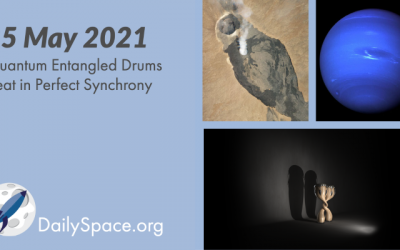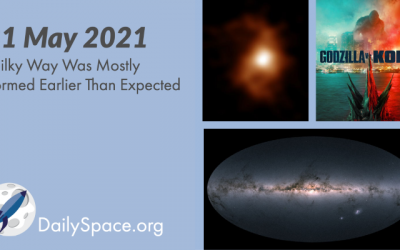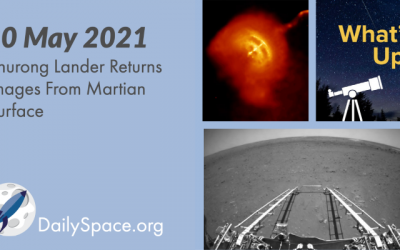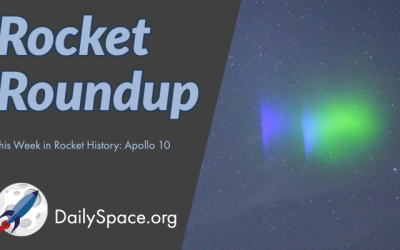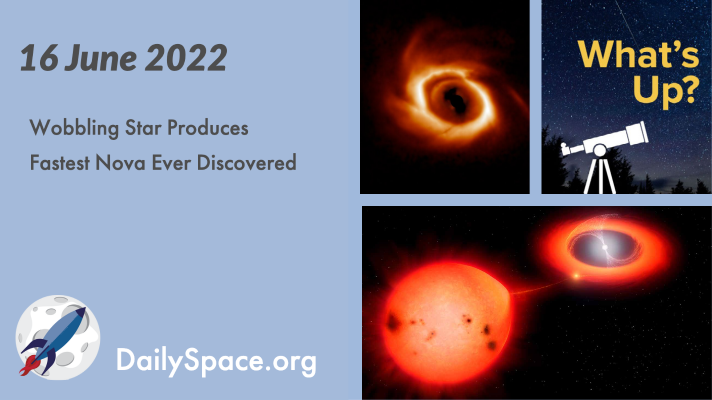
Wobbling Star Produces Fastest Nova Ever Discovered
Observations of V1674 Hercules reveal a nova produced by the white dwarf star that dimmed in only one day. Additionally, the strange star wobbles every 501 seconds, producing flashes in visible and X-ray light. Plus, more results from the 240th meeting of the American Astronomical Society, a farewell to SOFIA, and What’s Up is the June solstice.
Catch us on NowMedia TV
Saturday 11pm Central / midnight Eastern
Sunday 10pm Central / 11pm Eastern
Watch live on these stations: Houston 21.10, Atlanta 22.10
or tune-in on Apple TV, Roku, YouTube Live, or Amazon Prime
Rocket Roundup for May 26, 2021
There were only three launches this past week — an SBIRS satellite for the United States government, an ocean-monitoring satellite for the Chinese government, and the very successful launch of a Virgin SpaceShip suborbital plane. Plus, this week in rocket history, we look back at the first crewed Skylab mission.
Quantum Entangled Drums Beat in Perfect Synchrony
Physicists have built a pair of microscopic drums and, through quantum entanglement, have found they beat together in perfect synchrony. Plus, dwarf galaxies, China’s Zhurong rover, the East African Rift, and more about ice giants.
Milky Way Was Mostly Formed Earlier Than Expected
New research shows that our galaxy was already in place prior to a major collision with a dwarf galaxy ten billion years ago. Plus, meteor showers, fast radio bursts, tardigrades, climate change, and a science review of Godzilla vs. Kong. No. Really!
Zhurong Lander Returns Images From Martian Surface
After a successful touchdown on Mars last week, the Zhurong lander has sent back both black and white and color images. Plus, pulsars, ocean depths, heavy metal vapor, radioactive elements, and this week’s What’s Up which includes a total lunar eclipse!
Rocket Roundup for May 19, 2021
This week, we share a Rocket Lab launch failure (but first stage recovery success), yet another Starlink (with rideshare payloads), and a rare-sounding rocket launch. Plus, this week in rocket history, we take a look back at a key early mission: Apollo 10, which launched on May 18th, 1969.
Supernovae and Galaxies Being Used to Solve Astrophysics’ Biggest Questions
Two new studies are attempting to solve a couple of big puzzles in astrophysics: Is the Hubble constant actually constant? And why do galaxies have flat rotation curves? Plus, a young star’s circumstellar disk, the search for stellar-mass black holes, magnesium in the deep waters of Neptune and Uranus, and an interview with PSI scientist David Horvath regarding possibly active volcanism on Mars.


 We record most shows live, on Twitch. Follow us today to get alerts when we go live.
We record most shows live, on Twitch. Follow us today to get alerts when we go live.


